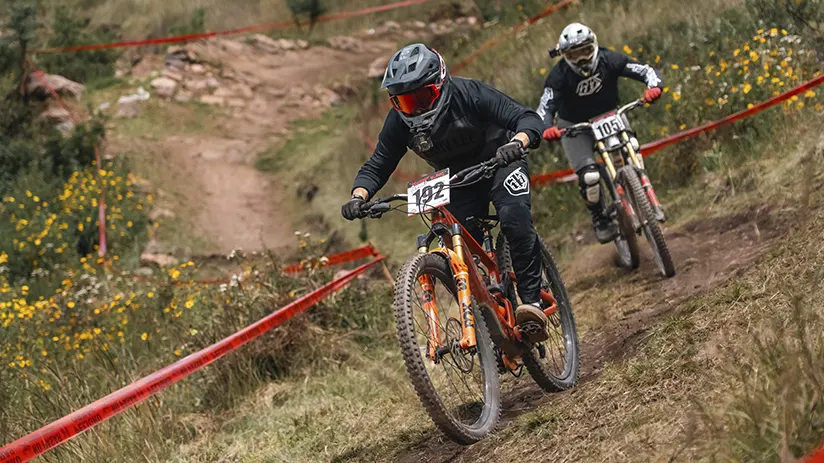Join us to discover everything about the biggest mountain biking event in Peru.
- What is Downhill?
- Santísimo Downhill
- Santísimo Downhill 2025 and the National Championship
- The Machu Travel Foundation
- On the pedals of a rider
What is Downhill?
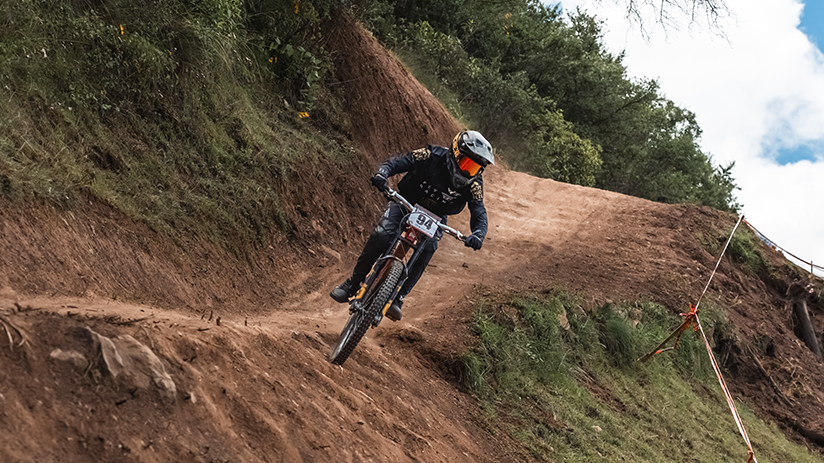
Downhill is among the most thrilling forms of mountain biking (MTB) in natural settings such as forests, mountains, and steep paths. This sport requires great discipline, technique, and courage to descend at high speed, overcoming natural obstacles along the course.
Riders, who are competitors, need to prepare their physical strength and mental sharpness. They also need quick reactions and a strong character to handle risky situations. This sport uses special bicycles made for extreme descents. They have features that help them handle rough, steep ground and many technical challenges.
The route generally starts at the top of a mountain and ends at the bottom. The main goal is to reach the finish line as quickly as possible, overcoming obstacles like rocks, ramps, sharp curves, jumps, and slopes. The fundamental premise is clear: to be the fastest to complete the descent. Therefore, the climb is not part of the competition; participants usually ascend on foot or other vehicles.
The race concludes as competitors cross the finish line, frequently giving their all in the final effort. Before the race, riders study the course thoroughly, riding it several times to memorize each section. Understanding every aspect of the course is crucial. Even a small change in the terrain can lead to success or an accident.
Downhill History
The origins of this discipline date back to the United States, and several cities with sports precedents. In 1970, young people in California used bicycles to get around and perform everyday activities. Their leisure time contributed to the discovery of new ways to have fun, including downhill mountain biking. It wasn’t until a year later that the first races took place, marking the beginning of this wonderful sport.
In 1974, a smart competitor surprised everyone at a local contest. He added a shifter and drum brakes that worked better than those on other bicycles. The innovation didn’t stop there; many passionate cyclists also began optimizing their bikes for cleaner descents.
By 1978, downhill skiing had gained popularity, yet enthusiasts sought additional locations to hone their skills. They wanted to challenge themselves and feel the thrill of extreme descents. As we can see, it was a sport that grew at an unprecedented rate in just a few years.
However, nowadays, organizers hold numerous competitions at the local, national, and international levels. The UCI Mountain Bike World Championships and the UCI Mountain Bike World Cup are the most important. These competitions are unexpected because one race decides everything, so the results can be surprising.
Santísimo Downhill
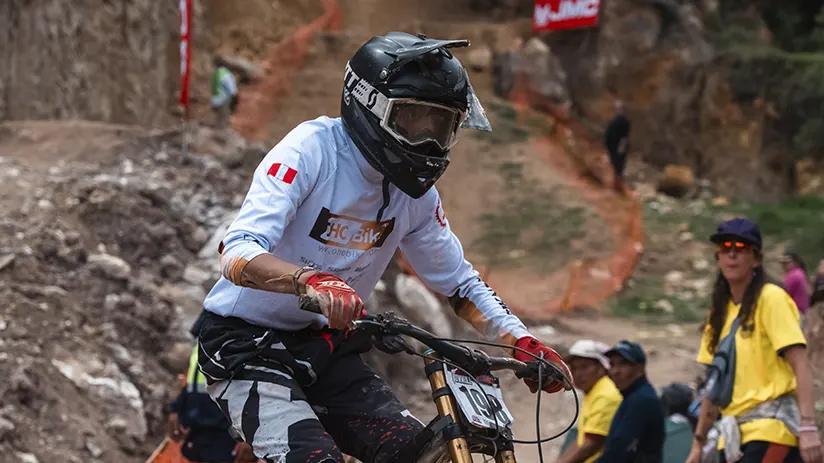
As mentioned earlier, downhill racing has experienced exponential growth in recent decades. Therefore, it’s no wonder that several South American countries have joined this exciting two-wheeled discipline. Competitions such as Valparaíso Cerro Abajo (Chile), Shimao Open (Argentina), and Santos (Brazil) are among the most recognized. However, Santísimo Downhill (Peru) stands out internationally because of its demanding circuit and the stunning natural beauty.
Santísimo Downhill comes from the Spanish phrase “Descenso Sagrado” or “Descenso Santo”, referring to its first edition in 2009. Since its inception, the competition has gained prestige for its technical level and the high performance of its participants. However, in 2017, legal issues related to land use in archaeological sites halted the competition. Time later, in 2023, the event marked its long-awaited return, this time with a new venue in San Isidro de Chicón, Urubamba.
Every year, numerous national and international cyclists gather to descend the hills of the Sacred Valley of the Incas. In this race against time, sharp reflexes, physical endurance, and pinpoint precision are key. In addition, balance, strategy, and cunning can make the difference between victory and defeat. Without a doubt, it is a one-of-a-kind experience.
Santísimo Downhill Champions
Over the years, the Santísimo Downhill has seen several champions of different nationalities crowned. Among them are runners from different countries around the world, all eager to challenge this magnificent course. Below, we present the last 11 champions of this magnificent ceremony.
| Edition | Champion |
| 2009 | Elías Cáceres (Perú) |
| 2010 | Filip Polc (Eslovaquia) |
| 2011 | Antonio Leiva (Chile) |
| 2012 | Pedro Ferreira (Chile) |
| 2013 | Mario Jarrín (Ecuador) |
| 2014 | Filip Polc (Eslovaquia) |
| 2015 | Marcelo Gutiérrez (Colombia) |
| 2016 | Pedro Ferreira (Chile) |
| 2017 | Pedro Ferreira (Chile) |
| 2024 | Tuhoto Ariki (Nueva Zelanda) |
| 2025 | Gonzalo Gajdosech (Argentina) |
Santísimo Downhill 2025 and the National Championship
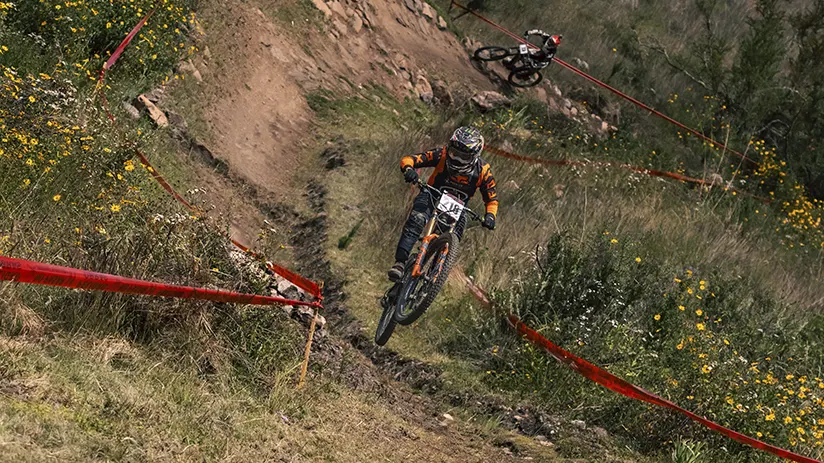
This year, the Santísimo Downhill celebrated its eleventh edition, reinforcing its position as an internationally recognized competition. In addition, this version included a special feature because it coincided with the celebration of the National Downhill Championship. Therefore, this allowed for the first time to crown national champions in men’s and women’s categories. For the second year in a row, the event happened in San Isidro de Chicón, at the foot of a hill with the same name.
April 12th and 13th were the main days for this competition, where more than 240 cyclists faced a demanding and technical course. All participants need to present a current ID. If the rider is a minor, they need a signed form from a parent or tutor. Many spectators gathered at the venue to watch a competition full of speed, skill, and passion.
Location
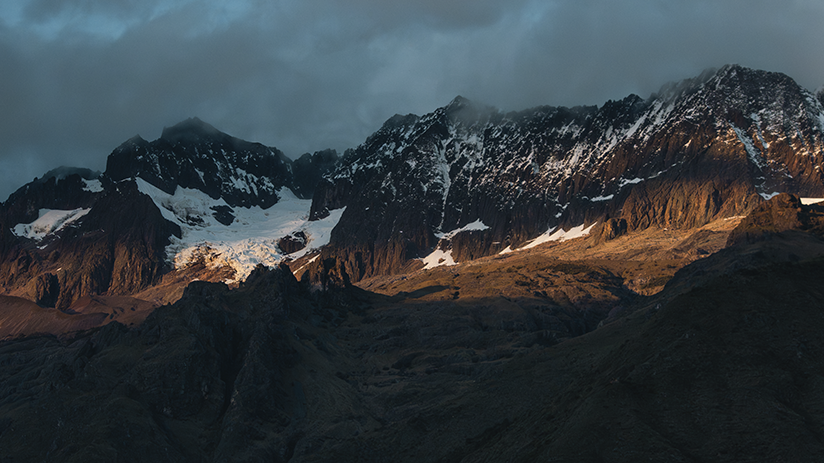
As we mentioned, the main location was San Isidro of Chicón Mountain, which is special because of its rough terrain, steep slopes, and narrow paths. The course is approximately 2.5 kilometers long, with a 450-meter gradient, and crosses terrain combining dirt, gravel, and rocks. Its altitude is between 3,548 and 3,127 meters above sea level. Along the way, there are diverse natural and man-made obstacles.
The most technical parts of the circuit have tight turns, ramps, and natural obstacles that require skill and focus. The cool and humid microclimate, because of its proximity to the snow, can include light rain. However, the weather is unstable and can change suddenly, as it varies considerably throughout the year. These features make it perfect for practicing this high-risk sport.
Preparations
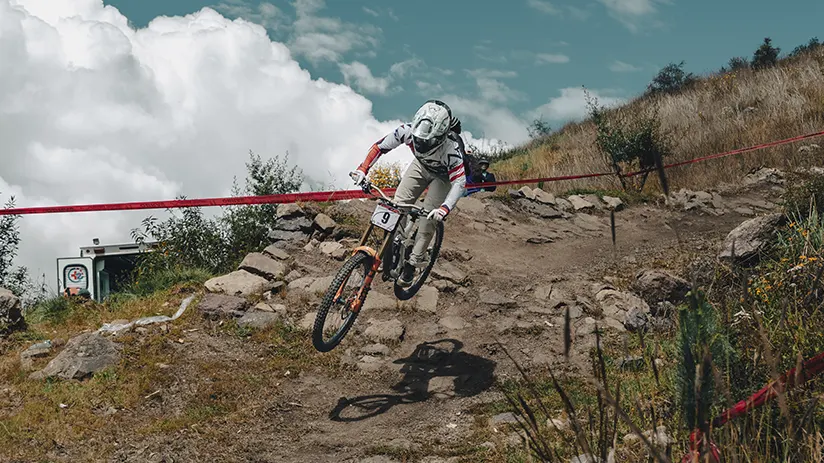
The terrain has particular geographical features, and the preparations are essential, as weather can vary considerably from every year. For this, residents, along with the district government, participated in clearing the course and providing the necessary maintenance. At the same time, many competitors carefully checked their bikes. They adjusted even the smallest details to prevent mechanical failures or surprises during the race.
Days before the circuit opened, several athletes took a recognized ride, especially those who participated in the previous event. All athletes walked the entire stretch of the course. This helped them to analyze each obstacle, curve, and terrain variation and define the best strategy for the race.
Although bicycles achieve higher speeds in a straight line, the key isn’t always choosing the shortest route. Finding the most efficient route based on the athlete’s abilities and the current terrain conditions is key. Sometimes, taking advantage of a ramp or carving a tight turn on the inside can make all the difference. In this sport, the balance between risk and caution is essential.
Days later, the official practice sessions began at times set by the organizers, allowing trainees on bikes. April 11th was the last day of practice, with two scheduled sessions: one at 10:00 a.m. and another at 2:00 p.m. During these sessions, many competitors also strengthened their emotional preparation, gaining confidence and security to face the main day.
Qualifiers

Qualifying took place on April 12th, a crucial stage in the development of Santísimo Downhill 2025. During this day, riders tackled the official downhill course to establish their qualifying time. According to the time obtained, the organizers defined the starting order for the central competition of the following day.
The timing recorded not only determined their starting position within each category but also represented an initial indication of the participant’s performance. Therefore, starting in last place can represent a strategic advantage, as the rider has a reference to previous times. However, this situation can also translate into additional pressure, especially for less experienced athletes.
This day was an incredible opportunity for the organizers to verify the overall coordination event and safety factors. Furthermore, the qualifying day was important because it allowed them to see the real conditions. The factors may vary from previous days, especially because we witnessed a drizzle.
Main Day
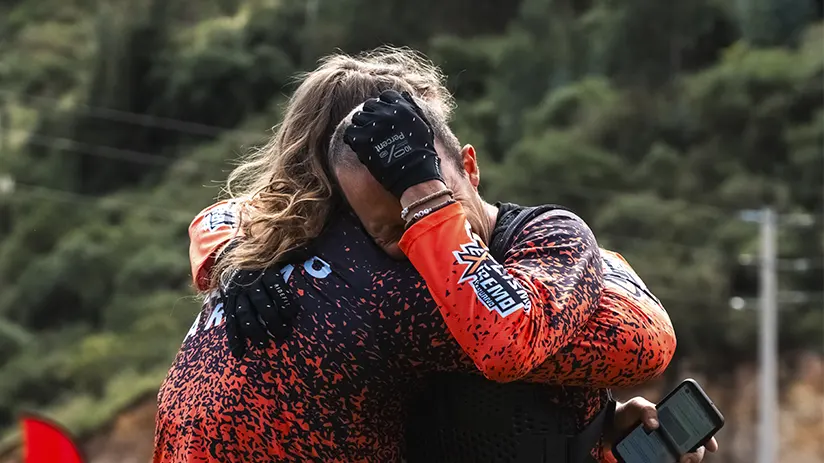
April 13th served as the central day of the Santísimo Downhill 2025 when the athletes defined the results. From early on, the anticipation was palpable; children, youth, and adults gathered in San Isidro de Chicón. All enthusiasm to witness one of the country’s most intense mountain biking competitions. Before the official start, the riders had the opportunity to complete one final practice session, fine-tuning details.
The competition began at 10:30 a.m. with the School category, featuring young talents. This stage was especially emotional because some young athletes were accompanied by an adult. Furthermore, this habit guides, motivates, and provides security to the little runners during the route. The scene made it clear that this sport develops new generations with passion and courage.
As the day progressed, the number of spectators increased. The most crowded spots were those where cyclists performed jumps, technical maneuvers, and risky turns, drawing applause and cheers from the crowd. The event’s climax came with the Elite category, where more than 25 experienced riders took on the demanding descent. All of them demonstrate a high level of technical and physical proficiency.
Throughout the day, various institutions collaborated to ensure the event’s success. For example, the Provincial Municipality of Urubamba was responsible for the live broadcast, allowing people to follow the competition. Likewise, there was support from clinics and medical personnel, strategically located at different points along the circuit. Moreover, the Peruvian Cycling Federation ensured the competition’s smooth running down to the smallest detail.
The last to take off was Gonzalo Gajdosech, who closed the route at 3:00 p.m., marking the end of an intense sports day. His descent kicked off the awards ceremony, recognizing the best athletes in their respective categories. Thus concluded the ceremony, in which more than 240 passionate runners celebrated the spirit of downhill.
Winners
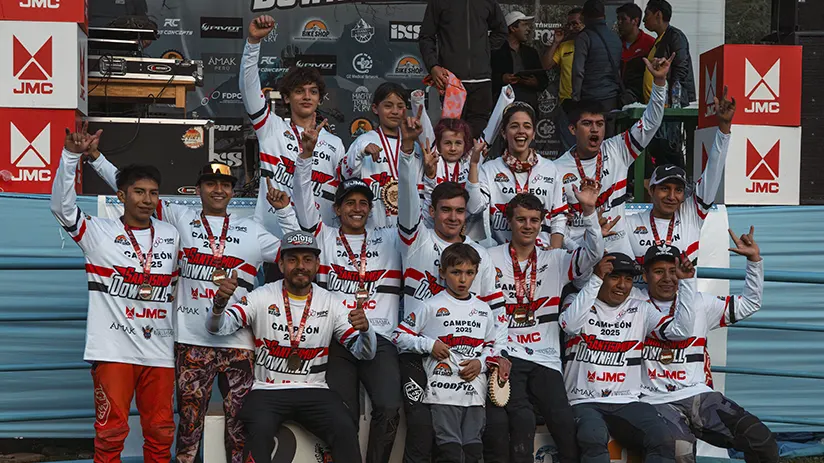
To close with a flourish, the riders gathered on the main stage, where an atmosphere of excitement and anticipation reigned. Everyone eagerly awaited the final results and who would place in the top five in each category. Below, we present some of the most notable competitors, based on their decline times.
| National Champions | |
| Category | Rider |
| Máster | Diego Sarmiento (Perú) |
| Cadetes | Bastian Romanville (Perú) |
| Junior | Franco Osores (Perú) |
| Damas | Sofía Ascue Bermeo (Perú) |
| Elite | Mateo Negri (Perú) |
| Élite varones | |
| Top | Rider |
| 1 | Gonzalo Gajdosech (Argentina) |
| 2 | Álvaro Martínez (Chile) |
| 3 | Mateo Negri (Perú) |
| 4 | Hans Pulgar (Chile) |
| Damas UCI | |
| Top | Rider |
| 1 | Sofía Ascue Bermeo (Perú) |
| 2 | Luz Mercedes Aquino (Perú) |
| 3 | Estela Acurio (Perú) |
| 4 | Pierina Polack (Perú) |
| Máster A | |
| Top | Rider |
| 1 | Renzo Venero Pacheco (Perú) |
| 2 | Brian Romero Muñoz (Perú) |
| 3 | Ángel Barzola Castro (Perú) |
| 4 | Hilver Jhonni Condori (Perú) |
| 5 | Jhonny Ramírez (Perú) |
| Máster B | |
| Top | Rider |
| 1 | Andrés Sotomayor (Colombia) |
| 2 | Juan Antonio Gordillo (Perú) |
| 3 | Alfredo García (Perú) |
| 4 | Helmo Rodas (Perú) |
| 5 | Emanuelle Veccio (Perú) |
| Máster C | |
| Top | Rider |
| 1 | Carlos Unda (Perú) |
| 2 | Luis García (Perú) |
| 3 | Edward Castro (Perú) |
| 4 | Douglas Stwart (Perú) |
| 5 | David Chávez (Perú) |
Social Impact
During the Santísimo Downhill, the participation of the local community was key to the event’s success. The occasion transcended being merely a sports contest. It helped boost the local economy and tourism. Many visitors and locals came to enjoy the show and the area.
Within this framework, organizers held a gastronomic fair showcasing traditional dishes. This fair offered a chance to enjoy the delicious food of the Sacred Valley. It made a lasting impression on the slopes and in the hearts of everyone who took part. Helping like this reaffirms the potential of sport as a tool for social and cultural development.
The Machu Travel Foundation

Machu Travel Foundation is one of the organizations most committed to cycling development in the last decade. Founded in Cusco, this non-profit organization promotes sport as a tool for personal and social transformation. Through a comprehensive approach, the foundation provides financial support, sports equipment, training classes, emotional support, and registration coverage for national and international championships.
However, its mission goes beyond sport, especially with the support for developing well-rounded individuals. One of the foundation’s main action channels is the Machu Travel Peru Club. An organization registered in the National Sports Registry and affiliated with the Peruvian National Sports Federation of Cycling. From there, it promotes the athletes’ participation in various sporting events.
Participation and social projection
The Machu Travel Foundation was active at every stage during Santísimo Downhill 2025. Its strong institutional presence stood out in the community stadium, demonstrating its commitment to the cycling community. In this edition, the young athlete Anghelo Gabriel Huamani, who participated in the novice category, received special assistance.
Anghelo was present from the days leading up to the event, analyzing the course and preparing his physical condition. Throughout this process, Hedder Puente de la Vega, president and director of the foundation, closely accompanied him. In addition, he was attentive to every detail to ensure the young athlete’s support and backing.
From training to the main day, the Machu Travel Foundation team did not go unnoticed. They showed a strong commitment to cycling development and close support for athletes. These actions are a clear example of how sport can drive growth and hope for many young people. Looking to the future, the organization aims to continue serving as an example and inspiration for other similar initiatives.
On the pedals of a rider
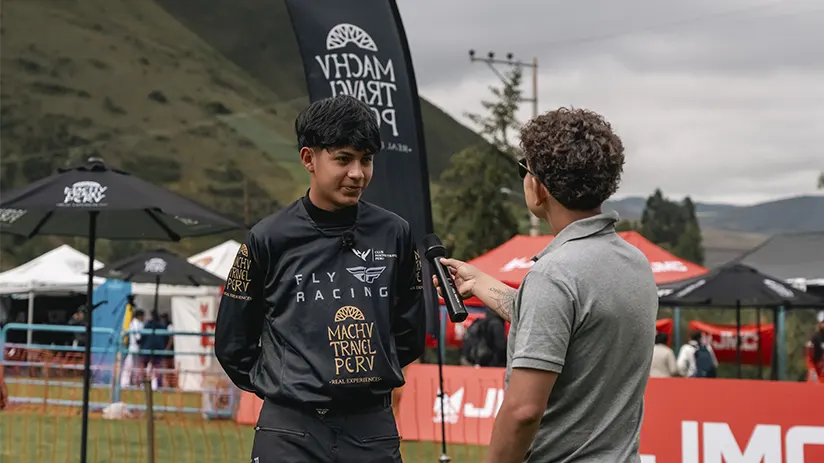
At just 14 years old, Anghelo Huamani has become a young cyclist in Cusco. With support from the Machu Travel Peru Foundation, he took part in the Santísimo Downhill 2025. He competed in the Novice category and had a unique experience. In addition, this event marked a turning point in his personal and athletic growth.
“Participating in this event was special for me. Although I’ve only been competing for a year, the Santísimo was a unique challenge that left me with great learning and emotions”, says him.
Therefore, the young athlete arrived in Urubamba early to explore the course, accompanied by the Machu Travel Foundation team. With the assistance of the staff, they spent more than two hours analyzing the course, both uphill and downhill. This exploration was key for the rest of the competition because we identified strategic lines for an efficient descent.
The next day, Anghelo managed to complete three solid practice downhill runs, applying everything he had previously analyzed. Thanks to the foundation’s logical support, he was able to access the areas near the starting point by van. All that to allow him to conserve energy and fully focus on his technique. At the end of the day, he reflected on his performance with the team and received valuable advice that boosted his confidence.
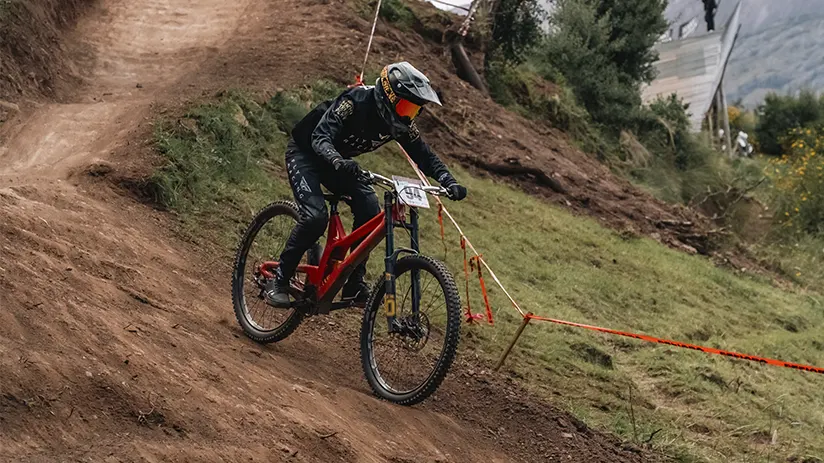
The third day arrived with high expectations because it was time to determine his starting order for the final race. He recalls, “Adrenaline surged when they announced my name. I felt a bit anxious, yet I remained confident in the effort I had put in”. After finishing the course, he got third place; this gave him a good starting position for the main day.
Finally, on Sunday, the main day of the championship, the crowd filled the atmosphere with excitement. From 10:30 a.m., dozens of people gathered to watch the best riders from all categories descend. Anghelo descended just after noon. Later, he commented, “Hearing my name called, the audience’s cheers, and knowing I had reached the finish line was truly comforting”.
Later, during the awards ceremony, they named him to the podium among the top five in the Novice category. Although he dreamed of a higher position, he felt grateful and proud of what he had achieved. “I’m leaving happy, grateful to the Machu Travel Foundation for all the support. These days have given me experiences I will never forget”.
Anghelo is already contemplating the future: upcoming competitions, additional challenges, and the unwavering passion to keep cycling toward his aspirations. His story shows how sports can greatly impact young people. It also highlights the positive role a dedicated organization can have in their lives.
